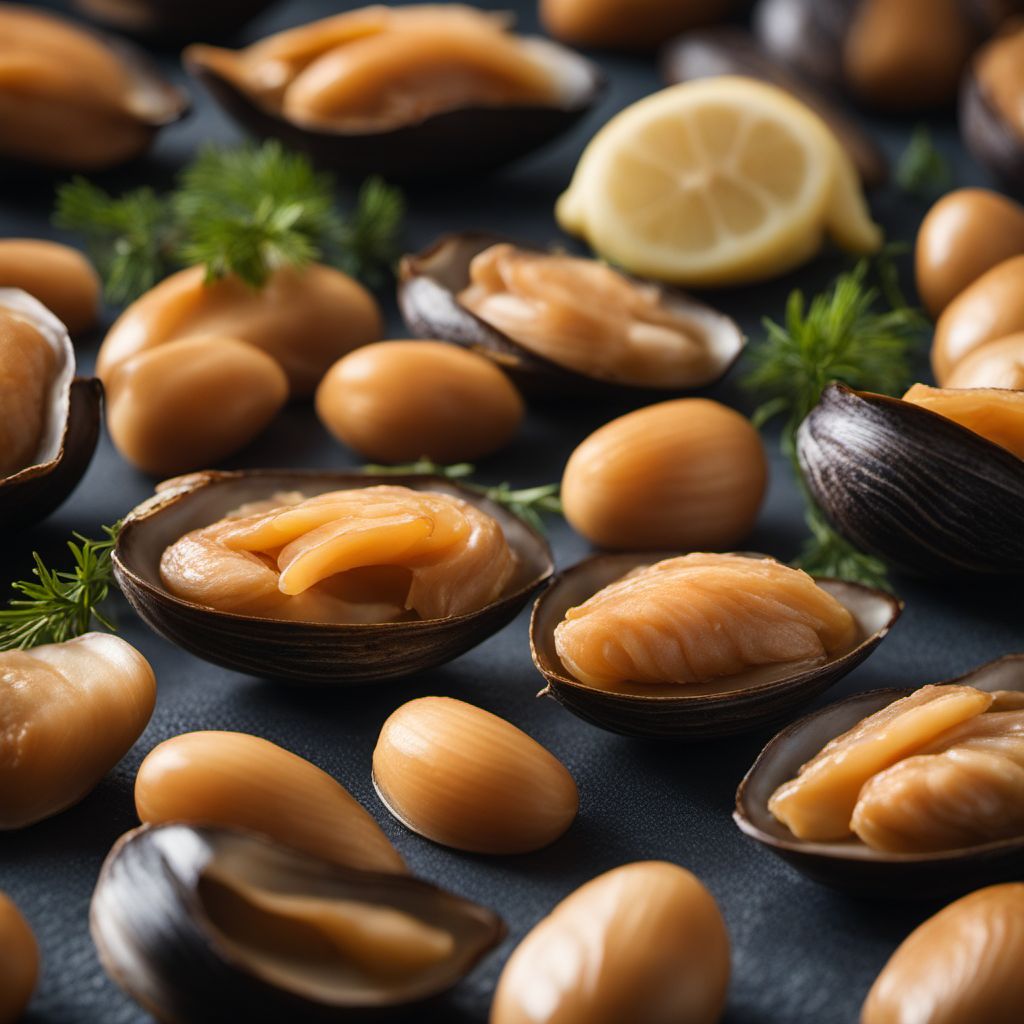
Ingredient
Chilean mussel
The Ocean's Delicacy: Exploring the Flavors of Chilean Mussels
Chilean mussels, scientifically known as Mytilus chilensis, are bivalve mollusks that have a dark blue-black shell with a glossy appearance. They have a plump and tender meat, which is orange in color. The meat has a mild, slightly sweet flavor with a hint of brininess, making it a popular choice for seafood lovers. The texture of Chilean mussels is soft and succulent, with a slight chewiness. When cooked, they become tender and juicy, making them perfect for a variety of preparations such as steaming, grilling, or adding to soups and stews.
Origins and history
Chilean mussels are native to the coastal waters of Chile, where they have been harvested for centuries. They have a rich history in Chilean cuisine and are an important part of the country's culinary heritage. Chilean mussels are sustainably farmed along the pristine coastline of Chile, where the cold, nutrient-rich waters provide an ideal environment for their growth.
Nutritional information
Chilean mussels are a nutritional powerhouse, rich in protein, omega-3 fatty acids, iron, and vitamin B12. They are low in fat and calories, making them a healthy choice for seafood enthusiasts.
Allergens
Chilean mussels may cause allergic reactions in individuals with shellfish allergies.
How to select
When selecting Chilean mussels, look for ones that have tightly closed shells or shells that close when tapped. Avoid mussels with cracked or broken shells, as they may be dead or spoiled. Fresh mussels should have a mild, briny smell of the ocean.
Storage recommendations
To maintain the freshness of Chilean mussels, store them in the refrigerator in a bowl or container covered with a damp cloth. They should be consumed within 1-2 days of purchase.
How to produce
Chilean mussels are commercially produced through sustainable aquaculture practices. Amateur producers can create a suitable environment for mussels by setting up a rope culture system in a clean, nutrient-rich body of water.
Preparation tips
Before cooking, rinse the mussels under cold water and remove any beards or debris. Discard any mussels that do not close after tapping or those with broken shells. Chilean mussels can be steamed, grilled, sautéed, or added to soups and pasta dishes. They pair well with garlic, white wine, lemon, and fresh herbs like parsley or cilantro.
Culinary uses
Chilean mussels are commonly used in a variety of dishes such as moules marinières, seafood paella, pasta with mussels, or simply steamed and served with a flavorful broth. They add depth and richness to seafood soups and stews.
Availability
Chilean mussels are commonly available in Chile and are exported to various countries around the world, including the United States, Europe, and Asia.
